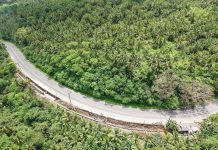TACLOBAN CITY – A study of the German Society for International Cooperation (GIZ) concluded that 94% of the total number of the supertyphoon Yolanda casualties were killed by storm surges. In its report recently released, the GIZ said that in badly devastated coastal areas of Tacloban City, Palo, and Tanauan, only 6% of victims died due to strong winds. In Tacloban, of the 2,496 estimated casualties, 2,297 of them perished due to big waves. In the nearby town of Palo, 1,033 of the 1,089 fatalities were caused by rising seawater. Similarly, Tanauan town had 1,252 casualties with 1,207 of them were killed by storm surges.
“It is concluded that the main killer was strong waves from the storm surge and to a much lesser extent, river floods, flash floods, landslides, and powerful winds,” the study said. Citing reports from the Department of Science and Technology, the maximum water height was 5.16 meters. The seawater reached up to 1,100 meters far in Tacloban, 960 meters in Palo, and 560 meters in Tanauan. While tagging storm surge as the main killer, the GIZ said that a big number of people could have been saved had the Philippine Atmospheric, Geophysical and Astronomical Services Administration (Pagasa) explained clearly what a storm surge is.
“If those who died in the storm surge would have been properly warned and they would have evacuated to safer areas, a death rate similar to the inland areas would have applied to them. This means roughly 94% of them would still be alive today,” the GIZ study concluded. The German agency noted that Pagasa did not issue any storm surge warning until a day before the disaster that killed more than 6,000 people and rendered nearly 2,000 people still missing, according to official data.
Among the storm surge casualties were the family of 54-year-old Salvacion Abas of the coastal village of San Roque in Tanauan. Five of her family members perished – a daughter, a daughter-in-law, and three grandchildren. Abas recalled that they were already inside the evacuation center a day before but returned to their house in the evening since the weather was fine. When big waves hit their makeshift house, they were swept away, with five of Abas’ family members killed.
“Had the police told us that there would be a tidal wave or tsunami, we could have moved to the next town for safety,” she added. Abas and her husband survived by clinging to empty containers they used in storing a local wine. The GIZ study found that only one source of storm hazard maps is known, thus indicating that storm surge hazard was “underestimated in the past.” “The Pagasa maps only included up to four meter water heights, but its forecast for the Haiyan (international name of Yolanda) surge height was seven meters,” the GIZ said.
(SARWELL Q.MENIANO)



